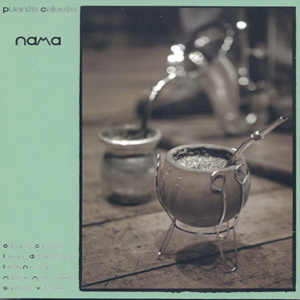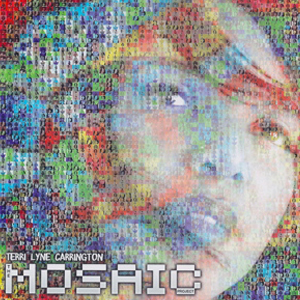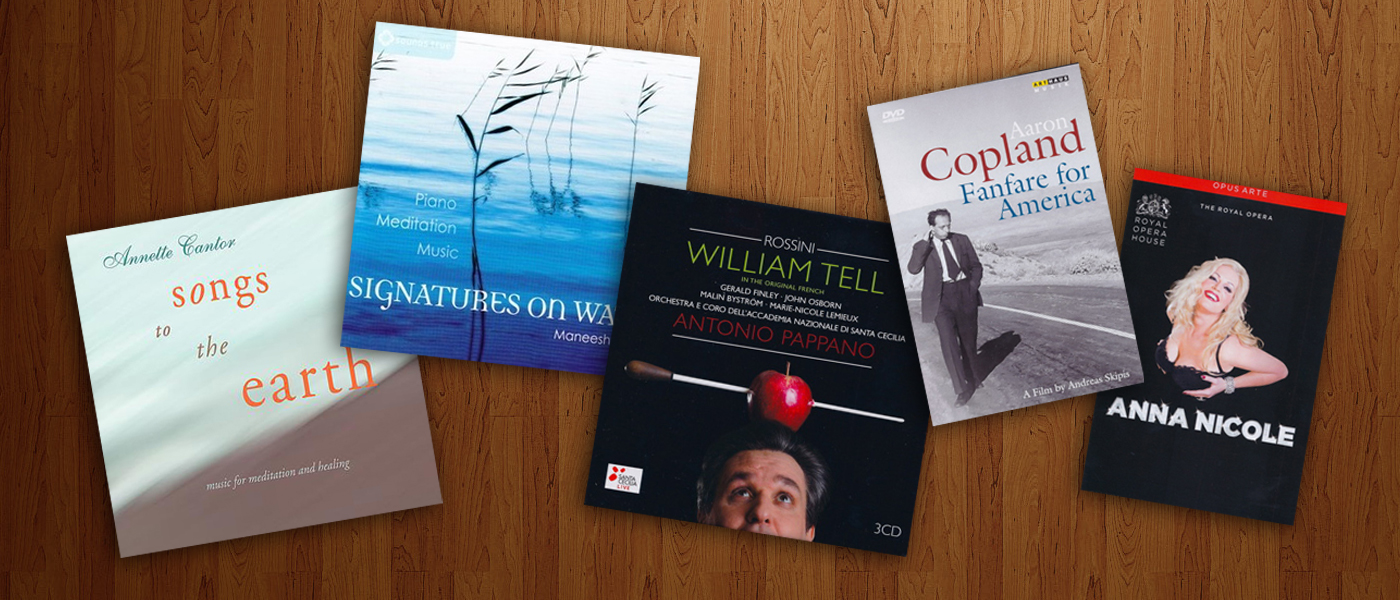Jon Anderson “Survival & Other Stories” Gonzo Media Group
- Performance:

- Sonics:


Is it possible that yours truly, who has hardly listened to rock ‘n roll since tripping weekly to the Beatles in the summer of 1967 and truly believing in the existence of tangerine trees and marmalade skies, all while participating in an sds (Students for a Democratic Society) summer organizing institute in Chicago and preparing for the revolution, is all of a sudden, just as the empire seems to be crumbling under the weight of its own internal contradictions, falling in love with the voice of former Yes lead singer Jon Anderson? Anderson, who is almost a year older than I, as if anyone could be that old and go through lord knows how many years of drunken rock ‘n roll carousing and cigarette and joint smoking and still have a voice, is celebrating his return to health (after a bout of asthma and acute respiratory failure in the summer of 2008) by releasing his solo album, Survival & Other Stories.
This is a major effort. The themes are spiritual and eclectic, the lyrics inspiring, and the oft-joyous effort facilitated in part by contributions culled from numerous fans who responded to Anderson’s call on the internet.
One song praises Buddha, Jesus, and Master Mohammed; another thanks Divine Mother Audrey Kitagawa (carrier of the teachings of Sri Ramakrishna); and a third is just a little too Christian God the Master and all that hierarchical male energy for comfort. There’s also at least one risky ballad where Anderson, in softer mode than usual, let’s us hear the state of his voice when he’s not rocking out.
Fans, of which there are millions, won’t want to miss the long, small print liner note essay, “Survival: Making Music is Easy… It’s the Business that’s Hard.†Written in all capital letters, in a style that I’ve attempted to mirror in this review’s opening paragraph, it’s one of those frank assessments that, if it doesn’t tell all, certainly tells enough to give you a sense of the life-draining pace that Anderson kept in the early days of his career. Covering the seminal period through 1968, the accounts list of bands, personnel, tours, and drugs more than justifies the all-capital letters, run on style.
Still to come, in what I expect will be a sequel to the liner notes, is Anderson’s tale of his life with the band Yes. After a successful debut album in 1969, Anderson remained with the group until 1980, only to rejoin in 1983, depart in 1988, and subsequently reform the band with a combination of older and newer members. Suffice it to say that Anderson, who was nicknamed Napoleon because of his diminutive stature and leadership role, stayed with the band until 2008, and performed on all but two albums from Yes old and new and in between.
It really is a case of Survival and then some. Which leads us to the CD at hand. The spirit of this album is so positive, the energy so uplifting, and Anderson’s naturally high, slightly ragged tenor voice so amazing, that all I, and probably you as well, can say is “yes.â€
Puente Celeste “Nama” MA Recordings
- Performance:

- Sonics:


Rarely is a recording of South American music so full of life, yet so mellow that you can play it in either foreground or background and feel equally refreshed. Inquisitive recording engineer Todd Garfinkle, whose label MA Recordings specializes in superb recordings of exotic originals whose music crosses the boundaries between jazz, classical, world, and more, recently journeyed to Argentina to record music collective Puente Celeste. Formed in 1997 by Argentine percussionist Santiago Vazquez, whose ever-inventive MA Recording Sera una Noche remains fresh, the group currently includes wind player Marcelo Moguilevsky, guitarist/singer/songwriter Edgardo Cardozo, bassist Luciano Dyzenchauz, and Vazquez (here playing percussion, table, mbira, guitar, and singing on one track).
Set down unedited in April 2010 at the Goethe Institute Buenos Aires, the up close recording was made using only two custom-made microphones. Readers accustomed to the air-rich ambiance of many MA Recordings may be surprised by Nama’s immediacy. This is a result of discovering an excellent Hamburg Steinway Grand in a very dry hall, and making the considerable best of a potentially poor recording acoustic that required seating the musicians in tight configuration.
The musicians are clearly having a load of fun: they whistle, wind, chime, beat, and accordionize on an improvised track named “Generala,†and smile to themselves on Dyzenchauz’s “Pinche Tirano.†Vazquez’s “Calma†is certainly tongue in cheek; calm it is not. Search in vain for the female soloist on the opening track, “Chiquita,†because the extremely mellow, sweet, samba-like voice seems to be that of its composer, Edgardo Cardozo. You’ll enjoy what sounds like a finger piano/harmonica duo on “Mundos que ce Tocan,†and Moguilevsky’s perfect pitched, vibratoless whistling on several tracks. “Generala,†is a bit of divine madness, with a hint of Nina Rota’s fanciful soundtracks for Fellini refracted through a South American lens. I keep playing this delightful CD over and over, discovering new things each time.
Audiophiles will have a ball with Nama. In addition to the CD version, which was recorded using a pair of MA custom DC-powered mikes equipped with 16mm DPA omnidirectional capsules and a 3 meter pair of Crystal Cable ultra XLR cables, then mixed down from a Korg MR-2000 DSD one-bit master recorder’s startlingly high sampling rate of 5.6 mHz, the company offers a 24-bit, 16.6.4 kHz high resolution version on DVD-ROM. Given the exotic nature of the instrumental combinations, the higher the resolution, the more the pleasure. The truly adventurous will want to seek out Puente Celeste’s previous albums, rarely circulated beyond Argentina, to compare the sound and spontaneity of Nama with the original recordings of 14 of the tracks, which initially appeared on Manana Domingo, Canciones, and Pasando el mar.
Terri Lyne Carrington “The Mosaic Project” Concord Jazz
- Performance:

- Sonics:


How could you not love a CD that begins with the lines “Change your mind, change your skin… cash a check, change your sex…â€? So does co-composer Nona Hendryx intone the opening verses of her extremely catchy song, “Transformation,†with accompaniment from such gifted artists as Anat Cohen, Geri Allen, Sheila E., Linda Taylor, Patrice Rushen, Tineke Postma, Hailey Niswanger, Chia-Yin Carol Ma, and Ingrid Jensen. By the time percussionist, vocalist, and producer Terri Lyne’s Carrington The Mosaic Project has played through its 14 jazzy, soul-filled tracks, we’ve also heard the voices of Esperanza Spalding, Cassandra Wilson, Shea Rose, Dianne Reeves, Gretchen Parlato, and Dee Dee Bridgewater.
If this compendium of vibrant female jazz artists were not enough, Sweet Honey in the Rock pillar Eleanor Johnson Reagon’s “Echo†even includes spoken commentary from veteran activist/educator Angela Davis. Men as diverse as Irving Berlin (“I Got Lost in His Armsâ€) and McCartney/Lennon (“Michelleâ€) do leave their mark. But basically, in Carrington’s words, this is an album of women “coming together to support and celebrate each other from a musical and social perspective.â€
With so many greats on the roster, it’s no wonder that Carrington’s liner note consists of only four, grammatically challenged paragraphs. (She or her editors confuse “its†with “it’s,†and the punctuation is scary). Describing The Mosaic Project as “cross generational, cross cultural and though jazz in nature, somewhat cross genre, which is pertinent because jazz has increasingly pollinated,†she gives us a delicious sampling of gifted artists on an inspirational roll.
Carrington’s personal history is no less inspiring than the quality of the artists she is able to gather around her. Born in 1965, she was encouraged by her mentor, Jack DeJohnette, to study at Berklee College of Music where she is now a professor. In addition to working with James Moody, Lester Bowie, and Pharoah Sanders, she moved to LA in the late ‘80s to become house drummer on the Arsenio Hall Show and, 10 years later, Quincy Jones’ VIBE (hosted by Sinbad). She has also spent over 20 years touring with a veritable compendium of jazz greats, including but not limited to Herbie Hancock, Wayne Shorter, Al Jarreau, Stan Getz, David Sanborn, Joe Sample, Cassandra Wilson, Clark Terry, and Dianne Reeves.
Carrington’s debut CD, Real Life Story, received a Grammy nomination in 1989. Her abilities as a top-flight producer also helped garner a Grammy nomination for Dianne Reeves That Day, and a Grammy Award for Herbie Hancock’s Gershwin’s World. For the past ten years, she has toured with many of Hancock’s musical configurations, and is featured on his Future2Future DVD.
The Mosaic Project, Terry Lyne’s fifth recording, is her first on Concord Jazz. Given the success of her previous collaborations, I expect this one to shoot way to the top. You’ll be happiest of you know what all fuss is about by grabbing a copy for yourself.
Portions of the following reviews first appeared at sfcv.org, the website of San Francisco Classical Voice
Puccini “Tosca (Kaufmann, Magee, Hampson; Carignani cond. Orchestra and Chorus of the Operahaus Zürich; stage production by Robert Carsen)” Decca DVD
- Performance:

- Sonics:


As much as Emily Magee (Tosca) and Thomas Hampson (Scarpia) receive equal billing, it’s the presence of Jonas Kaufmann (Cavaradossi) in Robert Carsen’s fascinating modern update of Puccini’s potboiler that will draw opera lovers to this live-from-Zürich Decca DVD. Not only is Kaufmann the most vocally fascinating, intelligent, and photogenic tenor of the decade (save for Rolando Villázon, who has been mostly sidelined of late), but he’s also the most versatile. At the same time as we can watch him on recent DVDs of Tosca, Carmen, Werther, and Lohengrin, and enjoy CDs of songs from Schubert and Strauss, we can contemplate attending his live-from-the-Met HD heldentenor debut in Wagner’s Die Walküre on May 14.
Kaufmann’s sound is hardly idiomatic Italian. Rising from a dark and husky low range that nonetheless has far more weight than Pavarotti’s, his burnished tenor becomes sharper and more focused as it ascends. There is a fair amount of Italianate “ring†(squillo), but it takes a back seat when compared to the cutting instruments of Franco Corelli or, going back a century, Enrico Caruso. And the warmth and heart-pull of the voice owe even more to intention than sheer sound.
Yet Kaufmann’s sense of Italianate style is unquestionable, and the intelligence with which he deploys his instrument unassailable. Most compelling is his final act aria, E lucevan le stelle (And the stars shone). Awaiting execution by firing squad, he begins what Puccini and librettists Illica and Giacosa conceived as his final love letter to Tosca in a virtual whisper of a voice. To unusually slow, sensitive, and focused support from conductor Paolo Carignani and the Orchestra of Opernhaus Zürich, Kaufmann perfectly sustains his thread of sound for almost half the aria. I know of no other performance quite like this.
In addition, he’s far freer physically, and more attractive, than anyone save the aforementioned Villázon. When Kaufmann smiles at Tosca in the first act, he’s so adorable that you know why Tosca wants him. If only the DVD format were capable of faithfully transmitting the wide dynamics of his voice. By all means, if you’re Blu-ray equipped, get that version should it appear.
Magee, decked out in gowns fit for Anita Ekberg http://www.youtube.com/watch?v=GKN1T3K1idg, downplays the diva-bitch approach. From her first entrance, her jealousy seems more a sexual tease than an annoyance. You can actually like this woman.
Later on, she feeds dangerously into Scarpia’s sexual fantasies. Shortly before she stabs him to death, she removes first her long gloves, then her dress. Murder in a black slip. She also sings extremely well, with full awareness of idiomatic style. Not that she’s about to displace all the Callas in your library. But who could or can?
The gruffer sound of Hampson’s once velvet baritone works well for Scarpia, but it’s hardly ideal for conveying the murderer’s mix of sadism and sexual obsession. Nor can his expressions quite encompass all of Scarpia’s evil. None of the voices or characterizations of the supporting characters are worth discussing.
Far more interesting are Davy Cunningham’s lighting design, which capitalizes on contrasts between almost glaring spotlights and darkness, and Carsen’s less than sacrosanct staging. The interior of the Church of San Andrea della Valle becomes a theater, with movable seats replacing pews. The briefly viewed tableau at the end of Act I, as the curtain rises to reveal Tosca ascending in a throne fit for a Cockettes production, screams pause and repeat. So does the kicker treatment of Tosca’s suicide, which is nothing like you would expect. Not everything makes logical or dramatic sense. Then again, neither do those two sides of the same coin, opera and politics.
Beethoven “Fidelio (Kaufmann, Stemme, Fischesser; Abbado cond. Lucerne Festival Orchestra and Arnold Schoenberg Chor)” Decca
- Performance:

- Sonics:


Fidelio’s story of an enslaved freedom fighter who experiences liberation through love sounds as if it could have been written in our present time. Beethoven’s unforgettable music may be two centuries old, and the conceit of a woman whose disguise as a man escapes the recognition of her potential bride and father-in-law as incredibly operatic as they come, but the passion and humanity with which Claudio Abbado conducts the Lucerne Festival Orchestra, Arnold Schoenberg Chor, and a sterling cast has the power to bring you to tears.
Abbado believes in Beethoven’s music with all his heart and soul. His intro to and pacing of the radiant opening quartet, “Mir ist so wunderbar†(Such wonder fills my breast, I feel my heart must burst) is so loving, gentle, and sublime that it brings to mind the most magical of Mozart’s operatic ensembles. Leonore’s great solo scene, and her prisoner husband Florestan’s equally moving second act opener grip us not just because they are wonderful pieces of music marvelously sung by Nina Stemme and Jonas Kaufmann, but because they are framed and supported with such emotional immediacy. The final scene of recognition, rescue, and redemption transcends all artifice to serve as a profound spiritual rite of passage.
Kaufmann uses every sound at his disposal to express passion, pain, and ultimate liberation. His “Gott! Welch Dunkel hier! … In des Lebens Frühlingstagen†(God! What darkness here! … In the springtime of my life) begins with a flawless swell from pianissimo to double forte. As impressive as that may be, what elevates it from flawless technique to high art is the way Kaufmann transition from the husky, covered tones of an enslaved, starving prison to the gleaming sound of someone crying for his love conveys the emotion of the moment. His spoken dialogue is just as convincing.
Although Stemme’s almost uncontainable passion translates on record as a bit of unsteadiness, and the microphones cover too much of her glorious tone, the triumphant climax of her great “Abscheulicher! … Komm, Hoffnung†(Loathsome monster … Come, Hope) gleams like a blade cutting through steel bars. She gets steadier as the opera progresses, and delivers dialogue as vital as Kaufmann’s. Christof Fischesser (Rocco) may be out of his element as a speaker, but his singing is extremely beautiful and filled with humanity. Nor can one slight the contributions of Peter Mattei (Don Fernando), Falk Struckmann (Don Pizarro), Rachel Harnisch (Marzelline), and Chrisoph Strehl (Jaquino).
Operaphiles whose shelves are already sagging under the weight of multiple versions of Christa Ludwig’s Leonore, Jon Vickers’ Florestan, and the two live recordings from Furtwängler (Flagstad and Patzak / Mödl and Windgassen) may wonder if there’s reason enough to purchase this live document (without audience noise, as strange as that may seem). Thanks to Abbado and Kaufmann, the answer is a resounding yes. As in their Decca aria recital with the Mahler Chamber Orchestra, their musicianship is of the highest order.


